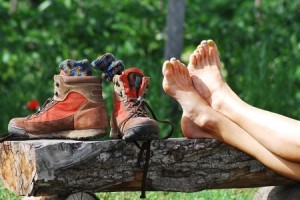 Working on my Camino book has taken a lower priority to my job and Yoga Instructor Training lately during these lovely autumn days of September and October. I am researching but not writing. I am working on:
Working on my Camino book has taken a lower priority to my job and Yoga Instructor Training lately during these lovely autumn days of September and October. I am researching but not writing. I am working on:
1. Evaluating self-publishing best practices through reading blogs and books:
a. Guy Kawasaki’s book APE: Author, Publisher, Entrepreneur-How to Publish a Book APE-Author-Publisher-Entrepreneur
b. April Hamilton’s book The Indie Author Guide: Self-Publishing Strategies Anyone Can Use The Indie Author Guide
c. The Book Designer blog Joel Friedlander The Book Designer
d. The Creative Entrepreneur Interviews Bob Baker- Creative Entrepreneur
2. Evaluating templates and tools for book writing. The Book Design Word Templates- Book Design Templates; Blurb tools-Blurb tools
3. I am reworking my book outline in Mind Manager adopting “a Book of Days” format.
4. I have been using my lunch hours for walking. I am considering using my lunch hours for writing small amounts each day. Hmmm, maybe alternate walking and writing.
5. For inspiration I am finalizing a title for my Camino book. I have decided to appeal to my blog and Facebook friends to provide their feedback.
Adopting a Book of Days format will allow me to take the reader through a Camino year season by season, month by month, and day by day. The calendar format maps meaningful, religious and historical events, ideas, quirky facts, herbs, folklore, and things to do and celebrate to a timeline. I can capture historical events from the Roman through Medieval and Modern times, including experiences from my Camino walk in 2014. Beautiful photographs, recipes, poetry, quotations and insights from the trail will also be included. A Book of Days approach will capture my Camino experiences but will enhance the readers experience with additional background in history, famous pilgrims and fascinating facts.
Autumn is the time for harvesting new book ideas and dreaming about what autumn must be like on the Camino. I can easily visualize:

Walking in the cool crisp lovely pine and eucalyptus forest trails in Galicia (click image to enlarge)

Snapping pictures of the fall wildflowers blooming beside the meandering trails on the Meseta (click image to enlarge)

Admiring the alpine wildflowers as a backdrop for the mountain views in the Pyrenees or from the mountain top village of O’Cebreiro (click image to enlarge)

Sitting in the cafes in Pamplona, Burgos or Santiago enjoying local hearty meals and fall festivals (click image to enlarge)
Help me harvest more ideas for book titles: So far I have:
1. The Practical Pilgrim—A Camino Frances Book of Days
2. A Camino Frances Book of Days
3. The Camino Buddy—A Camino Frances Book of Days
4. Timeless Footpaths—A Camino Frances Book of Days.
Please connect with me by phone or email or leave a comment right here on the site. Let me know what your thoughts on:
1. Adopting a Book of Days format.
2. The proposed book titles.
Buen Camino
Marion






 In 9 weeks (May 16) Marta and I will be leaving for our 40 day pilgrims walking adventure on the Camino de Santiago. As we finalize our preparation I am taking the time to be good to my feet. It has been a long winter in heavy boots and socks and my feet need dedicated exercise and massage to remove the tension, strain and tenderness that has accumulated. Yoga is a great way to take care of your feet. Your feet will get a healthy workout in many yoga postures. Being barefoot and focusing on balancing weight distribution and body alignment is just the start.
In 9 weeks (May 16) Marta and I will be leaving for our 40 day pilgrims walking adventure on the Camino de Santiago. As we finalize our preparation I am taking the time to be good to my feet. It has been a long winter in heavy boots and socks and my feet need dedicated exercise and massage to remove the tension, strain and tenderness that has accumulated. Yoga is a great way to take care of your feet. Your feet will get a healthy workout in many yoga postures. Being barefoot and focusing on balancing weight distribution and body alignment is just the start. I have been a program / project manager most of my working career which means an obsessive focus on planning. This of course runs over into my personal life and I have a Microsoft Project plan, as well as several “To Do” and outfitting lists that I am tracking. Below is my final 14 week Master “To Do” list for my Camino trail planning with Completion dates. All this planning has helped reduce my level of Camino Readiness anxiety.
I have been a program / project manager most of my working career which means an obsessive focus on planning. This of course runs over into my personal life and I have a Microsoft Project plan, as well as several “To Do” and outfitting lists that I am tracking. Below is my final 14 week Master “To Do” list for my Camino trail planning with Completion dates. All this planning has helped reduce my level of Camino Readiness anxiety. It has been a solid 2 months of walking in nasty winter conditions of varying cold arctic winds, heavy snow, ice storms, and slippery, dangerous surfaces. Last week I had an “I hate winter meltdown’ caused by feeling like an arctic vampire; living without sunlight and warmth and considered moving south. It was time to recalibrate, get perspective and put a positive spin on the winter blues. After all I am Canadian, and there are still 2 months until spring so I better “get a grip” and remember why I am training in these harsh conditions in the first place – to prepare me for the endurance required on the Camino!
It has been a solid 2 months of walking in nasty winter conditions of varying cold arctic winds, heavy snow, ice storms, and slippery, dangerous surfaces. Last week I had an “I hate winter meltdown’ caused by feeling like an arctic vampire; living without sunlight and warmth and considered moving south. It was time to recalibrate, get perspective and put a positive spin on the winter blues. After all I am Canadian, and there are still 2 months until spring so I better “get a grip” and remember why I am training in these harsh conditions in the first place – to prepare me for the endurance required on the Camino!
 As I look ahead to 2014, I marvel that it will be the Year that I celebrate turning 60 and becoming a true pilgrim (a wanderer or traveler) for 40 days of walking and exploring the Camino Santiago de Compostela. Last year at this time I had no plans for walking the Camino. I was originally planning a 2 week trip to the North West Territories with friends to celebrate my 60th. In the early spring I had a change of heart. I cannot remember why the Camino Trail became my new travel choice but my friend and fellow walker Marta was as excited as I was and the decision was firmed up. I am proud of how far I have progressed in 2013 on my training and preparation for my Camino sojourn.
As I look ahead to 2014, I marvel that it will be the Year that I celebrate turning 60 and becoming a true pilgrim (a wanderer or traveler) for 40 days of walking and exploring the Camino Santiago de Compostela. Last year at this time I had no plans for walking the Camino. I was originally planning a 2 week trip to the North West Territories with friends to celebrate my 60th. In the early spring I had a change of heart. I cannot remember why the Camino Trail became my new travel choice but my friend and fellow walker Marta was as excited as I was and the decision was firmed up. I am proud of how far I have progressed in 2013 on my training and preparation for my Camino sojourn. In this blog post I was planning to write about my shopping search for Trekking poles. However the last 2 weekends have been a snow fest and I have not been out shopping. This is unfortunate since the more it snows, the more I need those walking poles. During my last walk I found a tree branch and used that as a walking pole to help me trudge through the snow on the Trans Canada Trail. Instead I will write about my other major exercise commitment for my Camino Santiago de Compostella training in the form of Yoga warm up and cool down poses for long distance walking.
In this blog post I was planning to write about my shopping search for Trekking poles. However the last 2 weekends have been a snow fest and I have not been out shopping. This is unfortunate since the more it snows, the more I need those walking poles. During my last walk I found a tree branch and used that as a walking pole to help me trudge through the snow on the Trans Canada Trail. Instead I will write about my other major exercise commitment for my Camino Santiago de Compostella training in the form of Yoga warm up and cool down poses for long distance walking. Now that I am training with my backpack and hiking boots on longer distances and varied terrain trails, it is time to add trekking poles to my training gear. I was debating when to start training with the trekking poles, but the first winter snow, and the additional weight of my backpack convinced me to start shopping for new poles. When I sat down and evaluated the benefits of using walking poles it was a “no-brainer” decision. The 5 benefits of Trekking poles are:
Now that I am training with my backpack and hiking boots on longer distances and varied terrain trails, it is time to add trekking poles to my training gear. I was debating when to start training with the trekking poles, but the first winter snow, and the additional weight of my backpack convinced me to start shopping for new poles. When I sat down and evaluated the benefits of using walking poles it was a “no-brainer” decision. The 5 benefits of Trekking poles are:
 In a
In a 
 I recently had a comment submitted asking questions about blisters and shoes for walking the Camino de Santiago. And so Vicky, in answering your questions, I decided to include my guidelines for evaluating, planning for and maintaining foot health in the following 4 tips:
I recently had a comment submitted asking questions about blisters and shoes for walking the Camino de Santiago. And so Vicky, in answering your questions, I decided to include my guidelines for evaluating, planning for and maintaining foot health in the following 4 tips: At the beginning of June when I made my decision to walk 800 km on the Camino de Santiago in 2014, I had to take an honest look at the fitness and training involved to complete the walk. Things like:
At the beginning of June when I made my decision to walk 800 km on the Camino de Santiago in 2014, I had to take an honest look at the fitness and training involved to complete the walk. Things like: